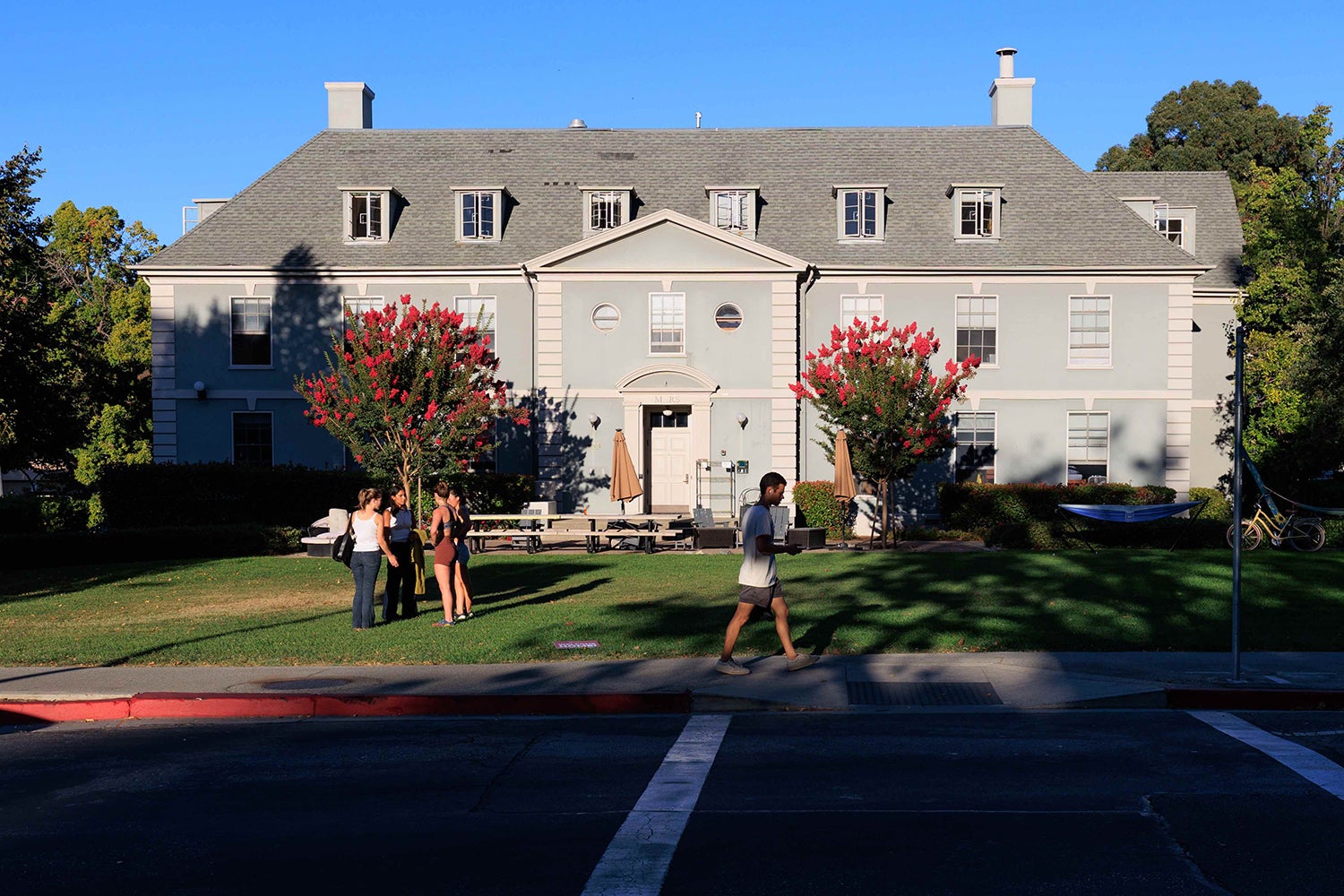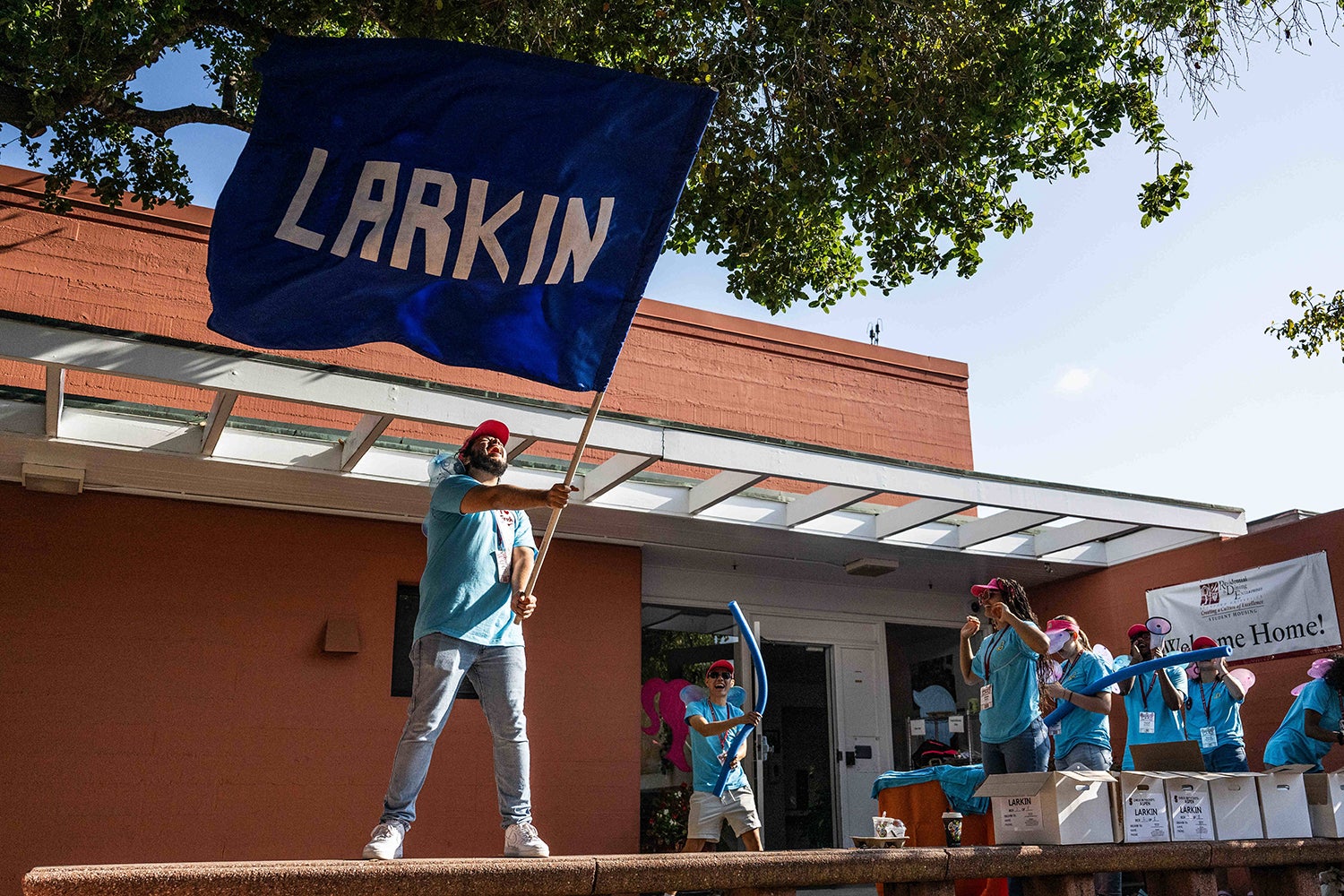
As one of the smaller houses on the lower Row, Mars makes it easy to get to know all the residents. (Image credit: Nikolas Liepins / Ethography)
Stanford is announcing several changes to the existing neighborhoods system this week, based on work over the last several months from the Neighborhoods Task Force.
The group, which included students, faculty, and staff from several divisions across campus, held numerous listening sessions throughout the autumn quarter centered on three core areas: the undergraduate housing and neighborhoods assignments process, the grouping of buildings within each neighborhood, and ways to foster community.
The result was a short list of recommendations that will be implemented in the 2024-25 academic year.
- Students will have the option to move from their assigned neighborhood after their frosh year and upperclass students will be able to select a residence in any neighborhood as individuals or in groups of up to four people.
- Rising sophomores will have rooms categorized as “sophomore-priority” spaces, primarily one-room doubles and other shared spaces that will ensure rising juniors and seniors have greater access to the Row and apartment spaces. Sophomores will still have the option to apply for and participate in theme communities.
- Campus housing will remain grouped into eight neighborhoods. To make the neighborhoods geographically contiguous, the Row will become its own to-be-named neighborhood, with the exception of Muwekma-Tah-Ruk and the Well House, which will be in Olive. All Wilbur houses will be one neighborhood, either Sequoia or Hyperion, and Mirrielees will join Wisteria.
- EVGR-A will house fewer undergraduates in 2024-25 and the number of undergraduates in EVGR-A is expected to decrease in subsequent years until the building is fully returned to graduate students, as it was originally envisioned.
“Neighborhoods were originally designed to create a consistent residential experience that enhanced a sense of community and belonging, so it was important for the Neighborhoods Task Force to develop an evidence-based, holistic understanding of Stanford’s current residential experience,” said English Professor Elaine Treharne, co-chair of the task force. “With the valuable feedback we heard from students, staff, faculty, and alumni, the task force felt these recommendations struck a good balance. The changes recognize the importance of student choice, but at the same time create new opportunities for connection and identity to be built organically within each neighborhood. We’re delighted the president and provost accepted our recommendations.”
Focus groups and feedback
Fourteen focus groups conducted over the summer and early fall shaped questions for a campus-wide student survey distributed in late 2023 that provided important insights into the student neighborhood experience.
Overall, students reported that neighborhoods were useful in community building and cohesion, and helped provide continuity over multiple years, with access to useful support and resources. They felt the system provided a diversity of housing options and noted an April 2023 pilot reassignment process allowing students to change neighborhoods without penalty was a positive change and should remain.

Larkin is the longest-serving all-frosh house situated close to the center of campus. (Image credit: Chris Tuite / Ethography)
However, they also expressed concerns about the varied desirability of housing and the difficulties in forming housing groups once friendships were established with students living in different neighborhoods.
Feedback emphasized the need for more inclusive, student-guided, and culturally vibrant residential experiences, and that student choice was critical to the success of the housing selection process.
“From when the task force was formed to when the recommendations were proposed to the president and provost, every step along the way included student voice and opinions,” said Ivy Chen, a political science major and student member of the task force. “Student ideas were crucial in the enhancements to the neighborhood model, and I am excited about the changes ahead.”
Looking forward
House and room selection for 2024-25 begins in early April when students will begin seeing the impact of the task force’s work and upcoming changes, including the option to request a different neighborhood.
To support community building, Student Affairs will continue to enhance campus and student social life with investments in student organizations, as well as campus-wide and neighborhood events.
Residential & Dining Enterprises will also continue to offer a unique set of amenities in each neighborhood, including dining commons, lounges, libraries, yoga and dance studios, and music rooms, along with spaces where students can study, socialize, relax, and enjoy community events.
“I am so pleased that students will now have more agency to decide for themselves where they want to live and build communities on this great campus,” said Shirley Everett, senior associate vice provost for Residential & Dining Enterprises and senior advisor to the provost on equity and inclusion. “The Neighborhoods Task Force was an exceptional collaboration between faculty, staff, and students, and these changes will benefit Stanford students for years to come.”